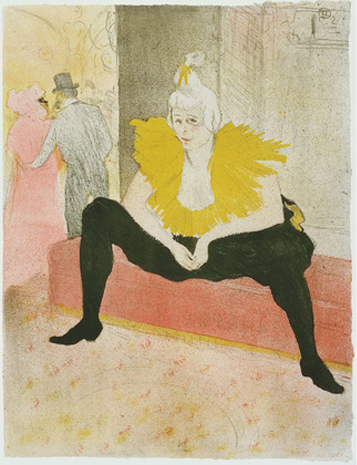Andrew Graham-Dixon on the art of Toulouse-Lautrec at the Royal Academy
MISS LOÏE Fuller, preserved for posterity in Toulouse-Lautrec's 1893 colour lithograph, is an incandescent apparition. From a distance she looks abstract, a gold and rose blob glowing on a field of lithographic spatter — not a person at all but some weird, gilded, fin-de-siècle premonition of biomorphic abstraction à la Arp or Miro. Up close, you can make out her diminutive, leaping legs and averted face, emerging from the billowing, flame-like costume that was — at least during the year or two that she caught Lautrec's attention — her passport to fame.
Look her up in the catalogue to the Royal Academy's "Toulouse-Lautrec: The Graphics" and you learn that Miss Fuller was performing her "danse du feu" at the Folies Bergère: clad in swirling voile skirts, she would "swing tulle veils high into the air on long poles to achieve particular light effects under the multicoloured electric spotlights."
In the days before celluloid granted a measure of immortality to the Loie Fullers of this world, 1893's smash hit tended to be 1900's inconnue. Lautrec, whose interest in his sitters dwindled with their notoriety, never depicted her again. (Likewise, he only did Oscar Wilde once — as a pair of ruby lips lost in an expanse of fleshy face — when the publicity surrounding his trial was at its height.) But it was enough. Placing her in his firmament, Lautrec guaranteed her survival.
When Lautrec pictured the stars of the Paris music hall, the celebrities, prostitutes, social climbers and fallers of Montmartre, he was — like Degas, whom he "worshipped" — meeting Baudelaire's famous prescription for a "painter of modern life." "The crowd is his domain," Baudelaire had written, "as air is for the bird and water for the fish....


